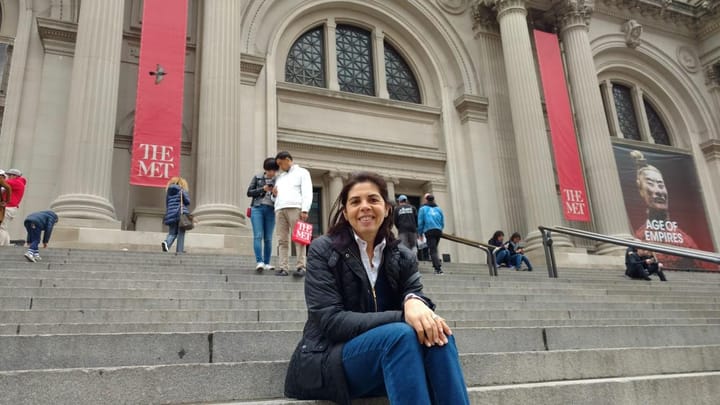Por Veka Duncan
En estas fechas es frecuente escuchar que la festividad de Día de Muertos tiene un origen prehispánico, atribuido al antiguo culto a la muerte que prevaleció a lo largo y ancho de los pueblos de Mesoamérica. Si bien es cierto que aquellos habitantes del México antiguo veneraron a deidades mortuorias y establecieron prácticas funerarias complejas, la realidad es que el Día de Muertos, como hoy lo celebramos, tiene una importante herencia europea.
Ya hace tiempo la historiadora y antropóloga Elsa Malvido demostró que la genealogía indígena del Día de Muertos fue en gran medida una construcción narrativa creada durante el México posrrevolucionario, alineada a un proyecto político y cultural que rechazaba lo extranjero para enaltecer un discurso nacionalista. El mundo intelectual de aquel tiempo, volcado a la creación socialmente comprometida y militante del comunismo, se encargó de arraigar esta noción a través de la pintura, el cine y la literatura. Bajo su mirada, lo indígena era sinónimo del pueblo – obrero y campesino – oprimido, mientras que lo europeo – y español, en particular – representaba, a través del colonialismo, la explotación del capital. Sobra decir que en esta interpretación de la historia, el México prehispánico se vislumbraba como una suerte de utopía socialista. A partir de entonces, las calaveras comenzaron a poblar los murales de Diego Rivera y las películas de Sergei Eisenstein.
Si el Día de Muertos no es, entonces, estrictamente atribuible al mundo prehispánico, ¿cuáles fueron las bases que permitieron que este mito se asentara en nuestro imaginario? Lo cierto es que efectivamente sí existió aquel culto a la muerte en los pueblos indígenas e incluso, gracias a las crónicas escritas por los conquistadores españoles, sabemos que algunas de las fiestas en las que este se expresaba sucedían en la época del año en la que hoy celebramos a nuestros difuntos. En el calendario ritual mexica, por ejemplo, a partir de la época de lluvias y a lo largo del otoño se llevaban a cabo diversas festividades y rituales que aludían a la muerte, algunos dedicados a Huitzilopochtli, su dios titular y señor de la guerra, así como la Miccailhuitontli y Micaílhuitl, fiestas de los muertos y de los muertos pequeños respectivamente.
La coincidencia de estas con las fechas católicas de Fieles Difuntos y Todos los Santos, así como también del Halloween – de origen celta – no es fortuita: es probable que todas ellas tengan un origen agrícola, pues al ser el otoño la época de las cosechas y el inicio de una época de frío e infertilidad, simbólicamente es cuando la tierra muere. A pesar de las diferencias geográficas, tanto Europa como México se encuentran en el hemisferio norte, por lo que los calendarios agrícolas de uno y otro lado del mundo coinciden.
Con la Conquista, primero militar y después espiritual, llegaron a estos territorios nuevos ritos funerarios y creencias mortuorias. Con ellas, se estableció también un nuevo calendario ritual y religioso, ahora católico. En este el 1 de noviembre estaba dedicado a Todos los Santos, es decir, a aquellos que no contaban con una fecha para recordarlos, y el 2 de noviembre quedó definido como el día de Fieles Difuntos, establecida a partir de las pérdidas masivas a mano de la peste bubónica. En esta fecha, se acostumbraba también acudir a los templos a lo largo de la noche para obtener indulgencia por sus almas, noción que cobró mayor relevancia a partir de que queda establecido el purgatorio; de esta manera, los deudos de los difuntos oraban por sus almas para evitar que ese fuera su destino.
En la Nueva España esto generó una nueva tradición: la vendimia callejera afuera de los templos durante la noche en que las misas de Fieles Difuntos se llevaban a cabo – ya desde entonces es claro que los mexicanos hacemos de todo una fiesta. Esto continuó con fuerza durante el siglo XIX, como lo narran los cronistas de su tiempo, como Ignacio Manuel Altamirano y Antonio García Cubas, quienes ya desde entonces consignan que se vendían calaveras de alfeñique en los portales del Zócalo en estas fechas a manera de imitación de las reliquias (huesos, principalmente) que eran presentadas para conmemorar a Todos los Santos. Este dulce, por cierto, llegó a nuestro territorio por influencia árabe, siendo una golosina que se arraigó en España a través de su contacto con medio oriente.
Queda todavía mucho que decir de los orígenes diversos y globales de lo que hoy llamamos Día de Muertos, pero queda al menos por lo pronto este botón para demostrar que si bien no se trata de una festividad que provenga estrictamente del México antiguo es, sin duda, profundamente mexicana, resultado de esa rica cultura híbrida que nos caracteriza.
Las opiniones expresadas son responsabilidad de sus autoras y son absolutamente independientes a la postura y línea editorial de Opinión 51.






Comments ()